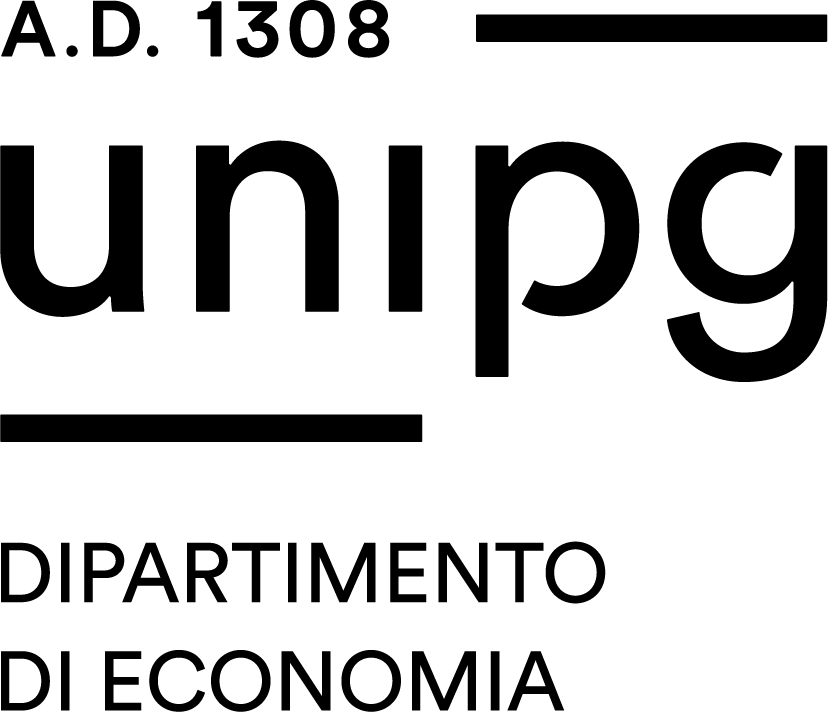Study-unit STATISTICAL COMPUTING METHODS
| Course name | Finance and quantitative methods for economics |
|---|---|
| Study-unit Code | A000208 |
| Location | PERUGIA |
| Curriculum | Statistical data science for finance and economics |
| Lecturer | Francesco Bartolucci |
| CFU | 12 |
| Course Regulation | Coorte 2023 |
| Supplied | 2024/25 |
| Supplied other course regulation | |
| Type of study-unit | Obbligatorio (Required) |
| Type of learning activities | Attività formativa integrata |
| Partition |
MOD. I STATISTICAL COMPUTING
| Code | A000209 |
|---|---|
| Location | PERUGIA |
| CFU | 6 |
| Lecturer | Silvia Pandolfi |
| Lecturers |
|
| Hours |
|
| Learning activities | Affine/integrativa |
| Area | Attività formative affini o integrative |
| Sector | SECS-S/01 |
| Type of study-unit | Obbligatorio (Required) |
| Language of instruction | English |
| Contents | Numerical and advanced statistical methods will be presented starting from real case studies and analyzed using the R language. |
| Reference texts | Braun, W.J., and Murdoch, D.J. (2007). A First Course in Statistical Programming with R, Cambridge University Press. Jones, O., Maillardet, R. and Robinson, A. (2009). Introduction to Scientific Programming and Simulation Using R, Chapman & Hall/CRC. Rizzo, M. L. (2008). Statistical Computing with R, Chapman & Hall/CRC. Voss, J. (2013). An Introduction to Statistical Computing, John Wiley & Sons. McLachlan, G. and Peel. D. (2004). Finite Mixture Models, John Wiley & Sons. Other materials made available to students attending classes. |
| Educational objectives | After completing the course, the student will be able to implement and apply appropriate numerical methods and statistical tools to real problems with the R software. |
| Prerequisites | The course introduces advanced topics in statistical computing. Prior knowledge of the fundamental concepts of statistics and probability will be assumed. In addition, a basic knowledge of the R software is required for laboratory activities. |
| Teaching methods | Lectures and lab sessions with the R software. |
| Other information | For information about services for students with disabilities and /or DSA visit the page http://www.unipg.it/disabilita-e-dsa |
| Learning verification modality | Take-home written exams to be done in R. Final oral exam about the topics of the course. The lab sessions are aimed at assessing the student's ability in implementing the methodologies introduced during the course. The final exam is aimed at assessing the level of knowledge reached by the student with respect to computational and methodological aspects covered by the course. |
| Extended program | The course introduces numerical methods and advanced topics in statistical computation that are used in many fields, such as finance and economy, data mining, and social sciences. Real case studies will be analyzed using the R software. A selection of topics included is: - Monte Carlo Simulations - Monte Carlo Integration - Numerical optimization techniques - Latent variable models: finite mixture models, latent class models, hidden Markov models - EM Algorithm - Bootstrap Inference |
MOD. II BAYESIAN COMPUTING
| Code | A000210 |
|---|---|
| Location | PERUGIA |
| CFU | 6 |
| Lecturer | Francesco Bartolucci |
| Lecturers |
|
| Hours |
|
| Learning activities | Affine/integrativa |
| Area | Attività formative affini o integrative |
| Sector | SECS-S/01 |
| Type of study-unit | Obbligatorio (Required) |
| Language of instruction | English |
| Contents | The module gives the first notions of Bayesian inference and an illustration of the main algorithms for the application of Bayesian inferential methods for data analysis. |
| Reference texts | Gelman, A., Carlin, J. B., Stern, H. S., and Rubin, D. B. (2020). Bayesian data analysis. Chapman and Hall/CRC. Robert, C. (2007). The Bayesian choice: from decision-theoretic foundations to computational implementation. New York: Springer. Robert, C. and Casella, G. (2010). Introducing Monte Carlo methods with R. New York: Springer. |
| Educational objectives | Students who successfully complete the module will possess the capability to implement algorithms of Bayesian inference for analysis of dataset of itermediate complexity. |
| Prerequisites | Basic courses of probability and statistics. |
| Teaching methods | Four/six hours of lectures including practical exercises on a weekly basis. |
| Other information | Students will use statistical software R. |
| Learning verification modality | Written and oral exam. |
| Extended program | - Review of principles of frequentist inference - Principles of the Bayesian inferential approach in comparison to the frequentist approach - Conjugate prior distributions - Specific cases: Beta-Binomial, Dirichlet-Multinomial, Gamma-Poisson - The case of Normal-Normal-Inverse Gamma and of linear regression - Objective and Jeffreys priors - Prediction, Confidence intervals and Hypothesis testing - Computation of posterior distribution via deterministic approaches: quadrature method, Laplace approximation, EM algorithm - Computation of posterior distribution via stochastic approaches: Monte Carlo method, Importance sampling, Metropolis-Hastings algorithm, Gibbs sampler, Reversible Jump algorithm |
| Obiettivi Agenda 2030 per lo sviluppo sostenibile | Quality education |


